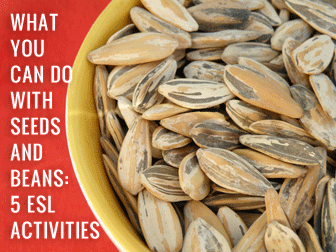What You Can Do with Seeds and Beans: 5 ESL Activities for Fruitful Results


Like those seeds, our students are full of potential as well. With the right conditions, instruction, encouragement, dedication and determination, they will bloom even lovelier than the flowers of which they are so proud. We can take a lesson from the connection students make to a project like this one. Whether you are purely an ESL teacher or you teach content areas as well, using science to introduce and refine ESL concepts with your students makes for memorable and effective classes.
It is easy to do and emphasizes the practicality of the language they are studying. It will surely make your class a day to remember.